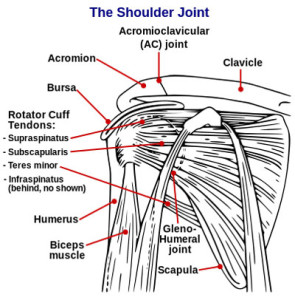 Thoracic Outlet Syndrome (TSI) is a medical term used to describe the compression of nerves and blood vessels in the narrow upper-body passage known as the thoracic outlet. This is a small area that’s located between the collarbone and first rib bone; and unfortunately, it oftentimes becomes compressed. When this occurs, the individual may experience a dull, aching pain in the neck, arm and back, as well as pain and swelling in the arm.
Thoracic Outlet Syndrome (TSI) is a medical term used to describe the compression of nerves and blood vessels in the narrow upper-body passage known as the thoracic outlet. This is a small area that’s located between the collarbone and first rib bone; and unfortunately, it oftentimes becomes compressed. When this occurs, the individual may experience a dull, aching pain in the neck, arm and back, as well as pain and swelling in the arm.
What Causes TSI?
TSI can develop for a number of different reasons. People who are born with an extra rib are at greater risk for developing TSI simply because there’s less room in the thoracic outlet, which in turn places more compression on the nerves and blood vessel here. Just because you have an extra rib doesn’t necessarily mean you will develop TSI, but it does increase your chance.
Obesity is another factor that increases your chance of developing TSI. According to a recent study done by the National Health and Nutrition Examination Survey, 2 out of 3 Americans are considered to be either overweight or obese. This is a shocking statistic that’s only going to get worse unless we make changes in our diet and lifestyle. One of the many problems associated with obesity is the increased chance of developing TSI. Going back to the basics of TSI, obesity causes extra fat deposits to develop throughout the body; thus, compressing the thoracic outlet where nerves and blood vessels are.
You might be surprised to learn that poor posture can also led to TSI. If you frequently slouch in your chair or don’t hold your body upright when you walk, there’s a chance you could develop TSI. Try to get into the habit of keeping good posture throughout the day. Whether you are sitting, standing or walking, you should keep your body supported with proper posture.
Treating TSI
Thankfully, a professional massage therapist can offer a wide range of services aimed at treating TSI and the associated pain it causes. If you believe you are suffering from TSI, a massage therapist will first perform a thorough examination to identify the area in which the nerves are compressed. Using this information, he or she will recommend massages to relieve the compression.
2The fact is that no two cases are completely identical, so treatment will vary from patient to patient. Talk with your massage therapist to see what options they recommend for your TSI condition. If all goes well, the therapist will relieve the compression in the thoracic outlet.
Contact us today for more information!
